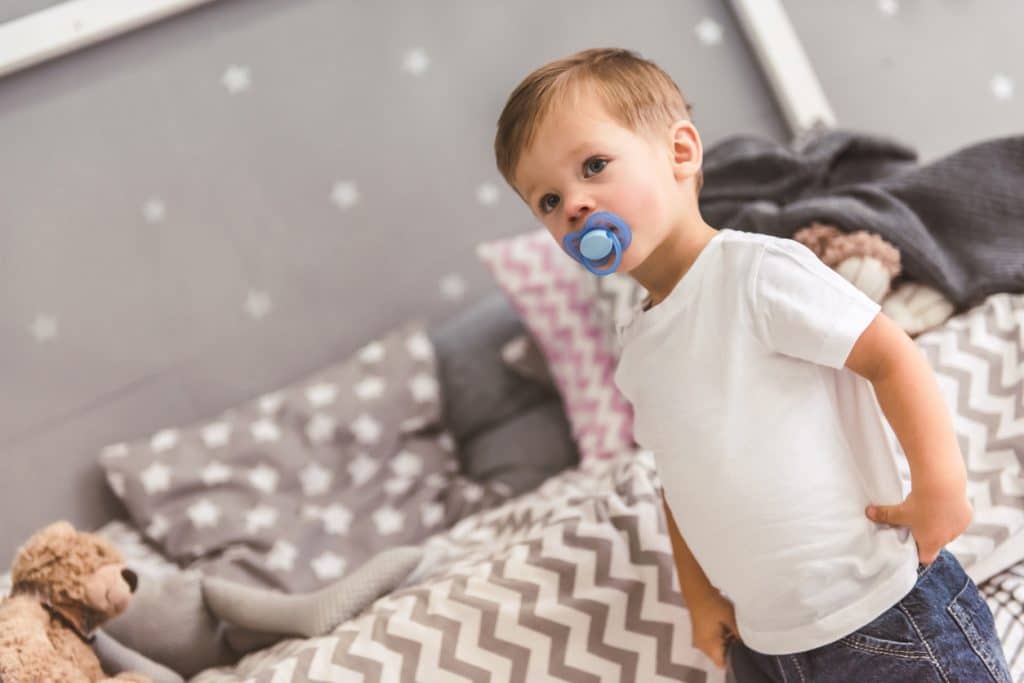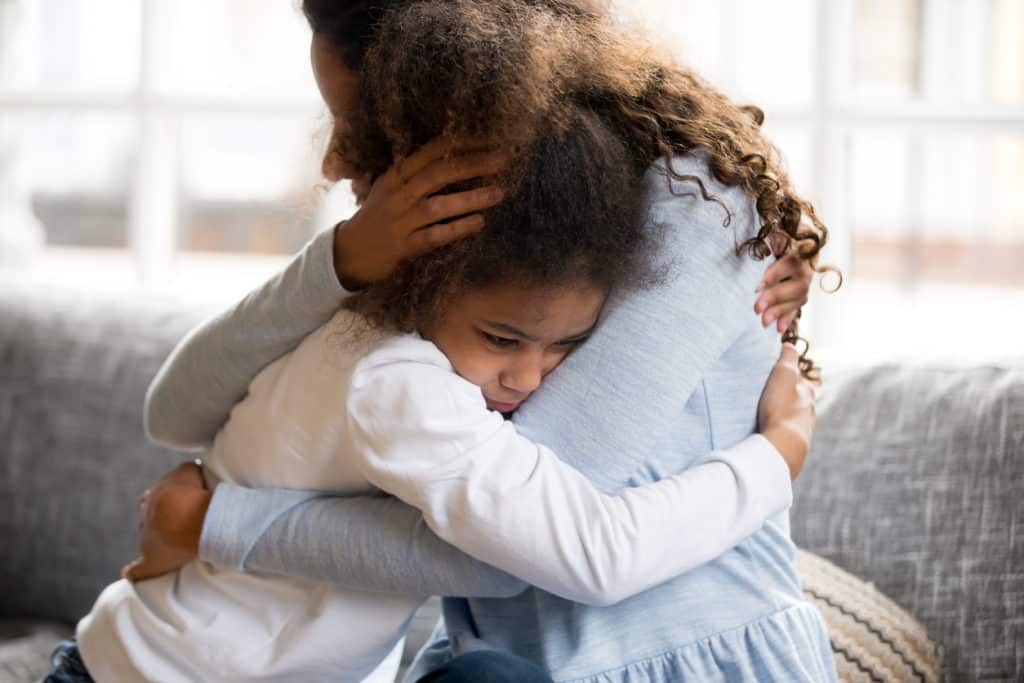Sucking is a primary function naturally present in all babies. It represents both the link with the mother and feeding (suckling or bottle feeding) but also reassurance and soothing. It is therefore not surprising that as they grow up, young children carry this over to the pacifier and find it difficult to part with it.
Ideally, the child should stop using a pacifier at around 1 to 1.5 years of age in order toavoid the appearance of dental deformities. The negative consequences of the pacifier on the child's growth and daily life are varied:
- Deformation of the teeth, such as the teeth in front,
- Incorrect positioning of the jaw,
- Difficulty chewing, no incision on the front teeth,
- Poor digestion,
- Pronunciation problems,
- Deformation in the mouth,
- Insufficient growth of the anterior facial mass.
In light of the risks involved, this article provides some tips on how to help your child stop using pacifiers.
Successfully removing your child's pacifier
The pacifier is generally a habit acquired at an early age. It is reassuring for the child. Here's how to stop the pacifier.
Contrary to popular belief, you should never forbid your child to use a pacifier or force him to stop. These techniques are usually counterproductive. Stopping the pacifier will go more smoothly if the child feels ready.
There are a variety of ways to help your child remove his pacifier. It's up to you to try the one that works best for you and your child. In any case, we recommend that you follow your child's pace and go gradually.
Alternatives to the pacifier
Changing habits
The pacifier is usually used at specific times: before going to sleep, for comfort, when bored, etc. The idea is to try to replace one habit with another. For example, at bedtime, you can try asking your child to remove the pacifier while reading a story.
Remember that the pacifier is a very strong soothing device for your child and removing it to go to sleep will be more difficult for the child to accept. It's best to be patient and gradual and allow the pacifier to fall asleep.
On the other hand, it is easier to remove the pacifier when the child is bored. In this case, divert his attention by keeping him busy: nothing like a game or a manual activity!
Finally, you can also consider replacing the pacifier with a comforter (which does not fit in the mouth) when the child needs comfort.
Awards and congratulations
Also consider giving your child praise and encouragement whenever he hasn't used his pacifier in a while. You might also consider some sort of game or challenge with a reward.
The orthodontic teat
We perform a orthodontic pacifier is a preventive or corrective solution that can allow your child to stop using pacifiers. Note however that it is advisable to discuss this with your paediatrician beforehand because not all pacifiers, supposedly anatomical, are good.
When used at an early age, the orthodontic pacifier prevents the harmful effects of the pacifier on tooth growth and jaw formation.
If adopted later, it serves as a transition between the pacifier and its complete cessation. It also corrects the positioning of baby teeth and prepares for the arrival of permanent teeth.
How to stop the pacifier through awareness?

Empowering the child
To help your child remove his pacifier, it's important to empower him. If your child is old enough, you can explain to him why using a pacifier is not good for him or his smile.
You can also give him more responsibility and involve him in the life of the house (setting the table, putting away his things, helping to cook, helping to put away the laundry, etc.). Praise him and value the fact that he is growing up.
All these little tasks will help your child to be proud of growing up. It will become obvious to your child that to grow up, he or she must stop using pacifiers.
Set a deadline
Setting a deadline with your child may be the best way to get him or her to stop using pacifiers. For example, you can choose a birthday, the beginning of daycare or school together. Don't hesitate to let your child choose the time he or she feels is right.
To do this, it is necessary to talk to your child regularly. Starting school is the perfect opportunity because your child knows that this is an important step: grown-ups go to school.
Explaining what is going to happen helps your child to be better prepared. He or she will have to buy his or her first school bag, his or her first school things, visit the school, be potty trained and... stop the pacifier!
If you're wondering if there's an ideal age to stop using pacifiers, dental experts say it's best tostop using pacifiers around 2-3 years.
An outside opinion
Pediatrician, dentist, school teacher: don't hesitate to ask an outside person to explain in an educational way why your child should stop using pacifiers.
Sometimes an outside opinion can carry more weight and reinforce what you say.
Verbalization

Teach your child to verbalize problems, anxieties, fatigue and general emotions. Not se
Teach your child to verbalize problems, anxieties, fatigue and general emotions. Not only do you create good communication, but it allows your child to express himself rather than throwing himself on his pacifier.
It is necessary for your child to be able to express his emotions in order to understand why he feels the need to take his pacifier:
- If he wants to take his pacifier because he's bored, then distract him by playing or going for a walk,
- If he expresses the need to sleep, help him get rid of his pacifier with a comforter, a story or a cuddle,
- If he is feeling anxious or sad and would like to be comforted by his pacifier, feel free to discuss his feelings and give him a long, comforting hug
In all cases, you must be gentle, patient and understanding. On the other hand, once the pacifier stop is launched, don't go back to allowing it from time to time. That would be counterproductive.
Books to stop pacifying
What if children's books could help you? By identifying with their heroes or the characters in the book, your child can finally manage to part with their pacifier.
Here is a non-exhaustive list of books to stop the pacifier:
- Béa separates from her pacifier (Jenny Album),
- Maxdermus : a plus tétine ! (Mélinda Martin, Jean Brisset),
- Farewell, pacifier! (Clara Suetens, Aline de Pétigny),
- P'tit Loup n'a plus besoin de tétine (Orianne Lallemand, Eléonore Thuillier),
- Au revoir Tétine! (Brigitte Weninger, Yusuke Yonezu),
- Nina's pacifier (Christine-Naumann-Villemin).
A pedodontist in Paris, Dr. Agachi specializes in prevention and maxillofacial care. Used to working with young children, she is available to perform an initial oral examination and possibly give you advice on how to stop pacifying. For all inquiries, please call the office.
Frequently asked questions about how to stop pacifying
From the age of one, you should start preparing your child to stop using pacifiers. Ideally, your child should be pacifier-free by 18 months, but he or she will be more ready to stop by age 2 or 3.
Help your child by verbalizing his or her needs and emotions. You can use games, books or rewards to make this step more fun.
An orthodontic pacifier can be used as a transition between the pacifier and the stop. It can also be used to correct the positioning of teeth. Talk to your dentist first.


